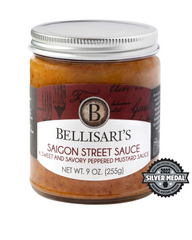The humble tortilla chip isn’t the sexiest of snack foods, but the sheer simplicity of this often under-rated munchie is what can definitely turn the tortilla chip into the MVP of any chip and dip assortment. MVP in this case because of the tortilla chip’s versatility. While the corn taste of fresh, crispy tortilla chips is very pleasing on its own, you must admit the flavor by itself might be considered unexciting or maybe “neutral” is a better word. This “plainess” is exactly what makes tortilla chips the perfect vehicle for flavorful dips especially when the dip is the star of the show. Tortilla chips have a rich and storied history which is why we celebrate National Tortilla Chip Day on February 24th each year.
Though potato chips continue to be the top-selling salted snack in terms of pounds sold, the growth of tortilla chip sales is a little bit more robust than the growth of potato chip sales. Considering that the best-selling condiment in America in terms of annual sales is salsa, it makes sense that tortilla chips are gaining popularity too.
A tortilla chip is a snack food made from corn tortillas, which are cut into triangles and then fried—or baked (alternatively they may be discs pressed out of corn masa then fried or baked). Corn tortillas are made of corn, vegetable oil, salt and water. Although first mass-produced commercially in the U.S. in Los Angeles in the late 1940s, tortilla chips grew out of Mexican cuisine, where similar items were well known, such as totopos and tostadas.
A similar fried corn snack is the corn chip, which is not made from a tortilla, but from corn meal which has been processed into a particular shape, typically a small scoop. Fritos are an example of this. The principal difference between the corn in tortilla and corn chips is that the corn in a tortilla chip has undergone a process known as nixtamalization, which involves processing the raw corn with quicklime.
Tortilla chips are the quintessential and often complimentary appetizer in Tex-Mex and Mexican restaurants in the U.S. and elsewhere. Their popularity outside of California saw a steady rise in the late 1970s when they began to compete with corn chips, the dipping chip of choice during the first three quarters of the 20th century. When not served with a dip, the chips are often seasoned with herbs and spices. However, they are typically served with a dip, such as salsa, chile con queso, guacamole, and these 4 dip recipes I love, using various Bellisari’s sauces and spreads. Tortilla chips work well as the perfect accompaniment! Enjoy!






